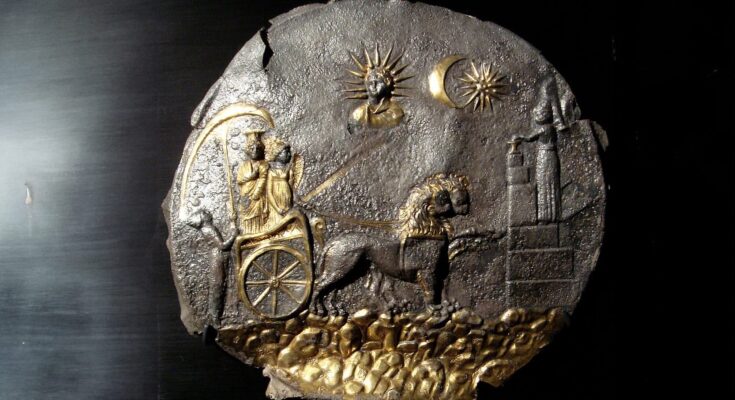Among the astonishing finds from Ai-Khanoum, the site of a Hellenistic city, is evidence of Greek philosophical knowledge. What do these findings tell us about the city and its people? Could Greek philosophy have interacted with its surrounding milieux? What might that interaction have entailed?
The mirage turns into an oasis
In the early 20th century, the erudite French archaeologist Alfred Foucher had all but resigned himself to the notion that the historical chronicles of the Hellenistic Far East were nothing more than a fanciful “Bactrian mirage.”
The question of just how Greek the Hellenistic Far East truly was had been cloaked in a veil of doubt, owing to the scarcity of compelling evidence. That was, of course, until the swinging ’60s, when the intrepid Daniel Schlumberger made a discovery that would turn the academic world on its head.
He unearthed the city of Ai-Khanoum, or Lady Moon in Uzbek, a place that was probably known in antiquity as Alexandria on the Oxus. To the astonishment of archaeologists, the Hellenistic layer of this ancient city revealed an intoxicating cultural cocktail, blending elements of Bactrian, Persian, and Greek heritage.
Delphi direct

The Greek influences were particularly striking, with a theater reminiscent of those in Greece, a gymnasium, and most captivatingly, the tomb of a man known as Kineas. This tomb bore inscriptions of maxims from the Oracle at Delphi, no less!
These inscriptions proclaimed that the maxims had been meticulously transcribed by one Clearchus and transported to Ai Khanoum so that they might “blaze from afar.”
The pithy precepts ring:
“in childhood, be orderly; in youth, be restrained; in middle age, be just; as a senior, be of good counsel; in the end, go without grief.”
Although a cross-reference with the original maxims cannot be made, given their unfortunate disappearance into the mists of time, the rhemata (precepts) from Ai Khanoum has been identified as the Commandments of the Seven Sages.
These sagacious edicts, known only through scattered epigraphical and literary whispers, comprise a total of 150 precepts that capture the quintessence of Greek wisdom and religious piety.
In the poignantly evocative context of a funerary inscription, it becomes abundantly clear that the Greek-speaking denizens of Ai-Khanoum were not only well-versed in their ancestors’ philosophical tradition but also deeply culturally connected.
This burgeoning local interest is further corroborated by an impressive array of herophoric and philosophical names scattered across the area, hinting at a vibrant local intelligentsia that held philosophers in high esteem.
Adding another layer of intrigue, a faint imprint left by the ink of letters on parchment in one of the rooms reveals verses from a lost Aristotelian treatise, which, rather amusingly, took Plato’s theory of ideas to task. The presence of such philosophical musings suggests an Aristotelian theme woven into the fabric of Ai-Khanoum’s intellectual community.
Philosophical precepts in far-flung Ai Khanoum
Could it be that Ai Khanoum harbored a profound admiration for Aristotle, perhaps reflecting the influence of Alexander the Great’s venerable tutor?
Clearchus, who seems to have diligently copied and transported the maxims to Ai-Khanoum, was a staunch follower of Aristotle’s Peripatetic School. Recognizing the universality of religious thought, Clearchus embarked on a noble quest to trace its development from the East.
He envisaged that these insights were first unveiled to the Iranian Magi, then passed on to Indian philosophers before they finally reached the Jews. His bold intellectual journey took him to the lofty valleys of northwestern India around the start of the 3rd Century BC.
Clearchus’ probable pit-stop on his grand tour of enlightenment, likely involving stimulating exchanges with the local Greco-Bactrians, indicates that the Hellenistic Far East was far from isolated from the vibrant intellectual currents of the Mediterranean world.
Whether or not the city was strictly devoted to an Aristotelian school, the Delphic aphorisms, at the very least, reveal a “mere Hellenicity,” suggesting that the citizens of Ai-Khanoum were well-acquainted with and admirers of fundamental Greek principles.



